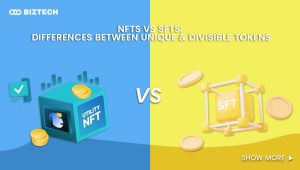The world of cryptocurrency is thrilling, brimming with innovation and the potential to revolutionize traditional finance. However, for newcomers, navigating the crypto landscape can feel like deciphering a coded message.
Fear not—this guide is your decoder ring! Understanding some key crypto terms is crucial before you dive headfirst into exciting new investment opportunities.
With a solid foundation in this essential crypto term, you will be well-equipped to explore the possibilities and make informed decisions within this dynamic space.
Foundational Crypto Terms
Cryptocurrency (Crypto): What is cryptocurrency? Cryptocurrency, or just “crypto,” is like digital money. But unlike regular money, it only exists on computers. It uses special codes to keep it safe and stop people from copying it.
Blockchain: What is blockchain? Think of blockchain as a big, transparent book that keeps track of transactions. It’s like a big list that shows who gave what to whom. This book is spread out over many computers so no one person controls it. That way, everyone can trust it’s fair and secure.
Mining: Cryptocurrency mining is not crucial to understanding cryptocurrencies, but it’s worth knowing about. In some crypto systems, miners are like security guards. They check transactions and add them to the blockchain. They get rewarded with new crypto coins for doing this.
KYC: KYC, or Know Your Customer, is the process where a financial service provider collects and verifies information about their customers when they sign up. This is mandated by regulatory bodies in both the customer’s and the business’s jurisdictions.
Ledger: In the context of cryptocurrencies, a ledger is a database of transactions. It records the transaction history of a particular cryptocurrency on the blockchain.
Liquidity: Liquidity has two meanings. Firstly, it describes how easily a cryptocurrency can be bought and sold. Secondly, it can refer to the amount of cryptocurrencies available for trading within a liquidity pool on a decentralized exchange.
Validators: In blockchain networks, validators are participants responsible for verifying incoming transactions. Unlike miners, who are used in proof-of-work platforms, validators play a crucial role in proof-of-stake platforms. They help uphold the integrity and security of the blockchain, earning rewards for their efforts. Validators are selected by the network to validate new blocks based on the amount of cryptocurrency they have staked within the network.
Volatility: Volatility describes the degree to which the price of an asset fluctuates. Bitcoin and other cryptocurrencies are known for their high volatility, meaning their prices can change dramatically over short periods. While this volatility may deter some investors, it can also attract traders seeking opportunities to profit from rapid price movements.
White Paper: White papers are documents often of an academic nature, presenting a new technology and providing detailed information about its implementation. They are commonly used by new projects to introduce potential users or investors to the product or service. White papers outline the technology’s purpose, functionality, and potential applications, helping stakeholders understand its value proposition and potential impact.
Transaction-related Crypto Terms
Transaction Fee (Gas): Think of cryptocurrency transaction fees as tolls you pay for using the crypto highway. Sometimes they are called “gas.” These small payments go to miners or validators for processing your crypto transactions.
Public Key/Private Key: Imagine this as an ultra-safe login for your crypto wallet. Your public key cryptography is like your account number, which lets others send you crypto. Your private key cryptography is like your PIN, crucial for keeping your crypto secure and spending it.
Address: Picture it like your mailbox, but for crypto! A cryptocurrency address is a special combination of letters and numbers that serves as your public identity on a blockchain network. Anyone can view your address and use it to send you cryptocurrency. (For further details on cryptocurrency addresses, visit: Cryptocurrency address).
Confirmation: After you send crypto, it takes time for the network to check the transaction. A confirmation is like a receipt showing that your transaction has been checked and added to the blockchain.
Smart Contract: Picture an automatic agreement on the blockchain. A smart contract is a bit of code that runs by itself when certain conditions are met. It cuts out the need for a middleman in transactions.
Investment-related Crypto Terms
Market Capitalization (Market Cap): This is the total value of all the crypto coins for a specific cryptocurrency.
Volatility: Crypto prices can go up and down a lot! Volatility is a measure of how much the price of a cryptocurrency changes.
Fiat Currency: Ever looked at the bills in your wallet? That is fiat currency! It’s money issued by the government, not backed by things like gold or silver. Its worth depends on people trusting the government and how well the economy’s doing.
ICO (Initial Coin Offering): Got a big idea for a blockchain project but need cash? An ICO, or Initial Coin Offering, is a way to raise money. Projects make and sell their own cryptocurrency to gather funds.
IDO (Initial DEX Offering): Think of it as similar to an ICO, but instead of using a centralized exchange, it uses a decentralized exchange (DEX) to raise funds.
Stacking/Staking: This involves locking up your cryptocurrency to earn rewards or interest.
Yield Farming: This strategy involves moving your crypto between various DeFi platforms to try and get the highest returns, but it comes with high risks.
Limit Order: A limit order is placed on an exchange to buy or sell an asset at a specific price or better. A buy order is executed at the target price or higher, while a sell order is only executed at the chosen price or lower.
Margin Trading: Margin trading involves using borrowed funds to trade. It allows traders to access larger sums of money compared to regular trading, enabling them to leverage their positions and potentially increase profits. However, it also exposes traders to higher risks.
Advanced Crypto Terms
DeFi (Decentralized Finance): Picture a financial system without banks! DeFi, or Decentralized Finance, is a new type of financial system built on blockchain technology. DeFi apps aim to offer traditional financial services such as lending, borrowing, and trading but in a decentralized manner, without middlemen.
dApp (Decentralized Application): These are like little programs running on a big blockchain network, similar to apps on a giant computer system. dApps can serve various purposes, from gaming and social media to complex financial tasks.
Smart Contract: Imagine a vending machine but for crypto! A smart contract is a piece of code stored on a blockchain that can automatically execute when specific conditions are met. This eliminates the need for a middleman in transactions and can be utilized for various purposes.
NFT (Non-Fungible Token): Digital assets don’t always fit the same mold! An NFT, or Non-Fungible Token, acts as a unique digital certificate of ownership for a digital asset, like artwork, music, or in-game items. NFTs leverage blockchain technology to validate ownership and authenticity.
Cryptography: Cryptography is the science of keeping information safe and secure, widely used in computing today. It plays a crucial role in ensuring the security of blockchains and cryptocurrencies. Cryptography achieves this through methods like the SHA-256 algorithm for Proof-of-Work and private-key/public-key cryptography for verifying and authorizing cryptocurrency transactions.
DAO: A DAO, which stands for decentralized autonomous organization, is a type of business entity represented by transparent rules encoded in smart contracts. These organizations aim to minimize centralization by allowing the community to govern the DAO and its products through voting on proposed changes or updates.
ERC-20: Utilized within the Ethereum network, ERC-20 stands as the most widely adopted standard for crypto tokens. It enables developers to effortlessly generate digital currencies that seamlessly integrate with existing infrastructure.
ERC-721: This standard on the Ethereum network is designated for non-fungible tokens (NFTs), allowing for the creation of distinct, non-duplicable tokens. ERC-721 finds application in crafting digital collectibles, gaming items, or tokenizing unique real-world assets.
EVM: The Ethereum Virtual Machine (EVM) functions as a global blockchain-based computer. It furnishes a runtime environment empowering developers to construct trustless, decentralized applications on the Ethereum network.
Fork: A fork happens when a blockchain’s protocol undergoes a change, resulting in two separate chains. This typically occurs when crypto developers or communities decide that a protocol adjustment is necessary. There are two types: hard forks, which create a new currency due to breaking compatibility, and soft forks, which update the ruleset with the support of most network participants.
FUD: Fear, uncertainty, and doubt. This term refers to information that tends to make people view the market pessimistically.
Gwei: A unit of Ethereum’s native currency, Ether. Wei is the smallest part, and Gwei stands for Giga-wei, equal to 1,000,000,000 wei.
Halving: Halving is the halving of the block reward for Bitcoin mining, reducing it by 50%. This occurs approximately every four years after 210,000 blocks have been mined. Initially starting with a 50 BTC block reward, currently, after three halvings, it is at 6.25 BTC per block.
Hash rate: This is a measure of processing power, indicating how many network-specific calculations are performed per second by the Bitcoin network. A hash rate of 1 terahash means the network can conduct 1 trillion calculations per second.
Testnet: Smart contract platforms like Ethereum and Binance Smart Chain offer developers a testing ground known as a testnet. Here, developers can deploy and experiment with smart contracts in an environment that mimics the main network. However, in testnets, the cryptocurrencies used hold no real value and can be obtained for free from a testnet faucet.
UTXO: In cryptocurrency networks, wallet balances aren’t stored as simple variables, such as “John Doe’s balance: 100 BTC.” Instead, they are calculated from Unspent Transaction Outputs (UTXOs). UTXOs represent units of unspent cryptocurrency resulting from various transactions made to the wallet. The sum of all UTXOs associated with an address constitutes the wallet’s available balance.
Crypto Terms Slang
HODL: Nope, it’s not a mistake! HODL is a funny term meaning “hold on for dear life.” It’s popular among people who invest in crypto for the long term.
Bull/Bear: These terms describe different views on the market. A bull is hopeful, expecting prices to rise, while a bear is more pessimistic and anticipates prices will drop.
FOMO (Fear Of Missing Out): It is the worry that you might miss a chance to make money from an investment.
FUD (Fear, Uncertainty, Doubt): This is negative talk or rumors spread to discourage people from investing in a specific cryptocurrency.
HODL (Hold On for Dear Life): It is a funny way of saying you’re planning to keep your crypto for a long time, no matter if the prices go up or down quickly.
Lambo: Short for Lamborghini, a fancy car that some people dream of buying with money made from crypto.
Moon/Mooning: When a cryptocurrency’s price is skyrocketing quickly, people say it’s “going to the moon.”
NGMI (Not Going to Make It): It is a term expressing doubt about someone’s chances of succeeding in the crypto market.
Rekt: It is slang for losing a lot of money in the crypto market.
Satoshi (Sat): The smallest unit of Bitcoin, named after its mysterious creator, Satoshi Nakamoto. It’s like cents to a dollar.
Whale: A big investor who owns a lot of cryptocurrency and can have a big influence on prices in the market.
Whale Watching: It is the practice of keeping an eye on the actions of big cryptocurrency investors to understand possible market changes.
DYOR (Do Your Own Research): This is an important reminder in the crypto world to carefully investigate any investment before putting your money into it.
Related Post: 10 Smart Strategies for Crypto Investment
Conclusion
This guide has unpacked crucial crypto terms covering everything from foundational concepts like wallets and blockchains to navigating transactions, investment considerations, and even understanding crypto jargon. Armed with this knowledge, you’re ready to dive deeper into the constantly evolving realm of cryptocurrency!
Remember, DYOR is essential before making any investment decisions. To aid your exploration, you can utilize resources such as CoinMarketCap for tracking market data, Investopedia’s Crypto Basics for comprehensive explanations, or Khan Academy’s Blockchain Basics for an interactive introduction to the technology. Happy exploring!






